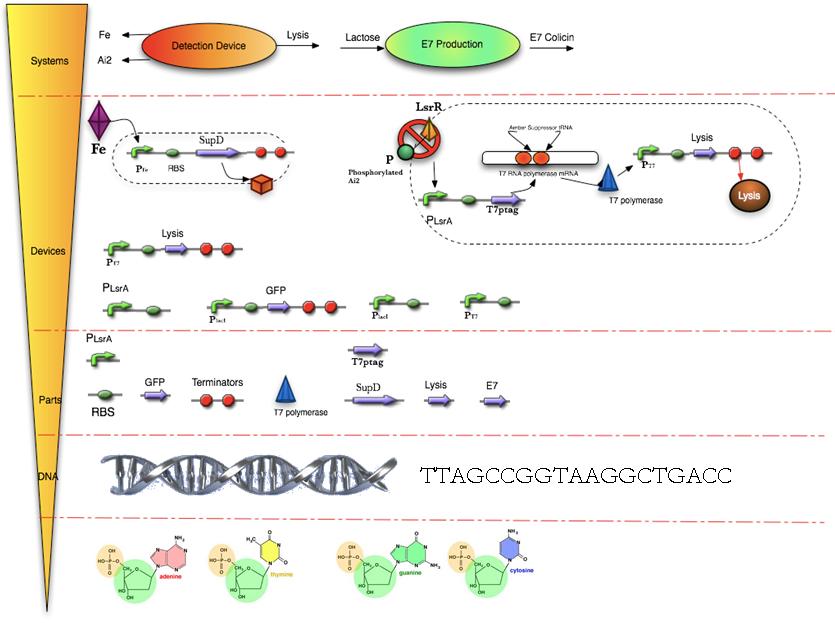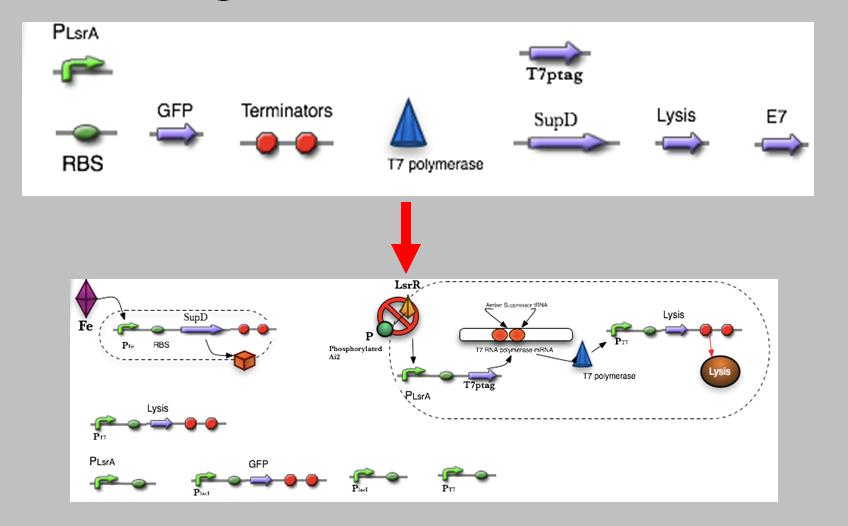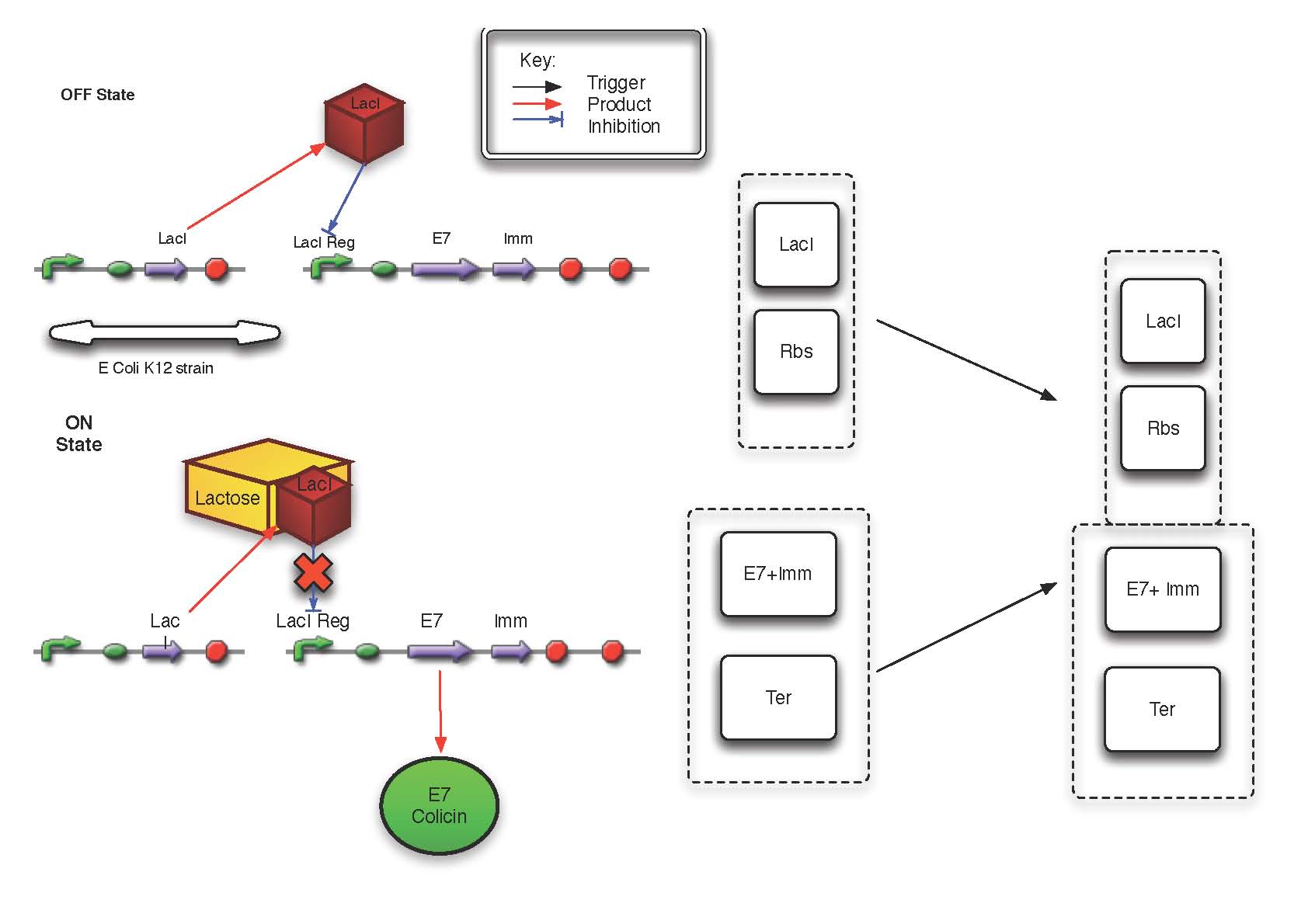Team:NTU-Singapore/Team/Project
From 2008.igem.org
|
Contents |
Introduction
The focus of the NTU @ iGEM Team's project is the use of bacteriocins (i.e. colicin E7) for the killing of the Escherichia Coli O157:H7 enterohemorrhagic strain (EHEC), which causes symptoms such as bloody diarrhea. Currently, there are no antibiotics that can cure EHEC. This is a prevalent medical problem that has a reach of a wide population. The team intends to achieve its objective by engineering a biological system that:
i) produces Colicin E7,
ii) detects the symptoms (e.g. blood) and presence of pathogenic E-Coli, and
iii) releases E7 through lysis.
The system will be developed using the following proposed protocol: Colicin E7 production is achieved by the insertion of the colicin E7 gene and colicin immunity gene downstream of and under regulation of the LacI gene, found in wild type E. Coli K12 strain. The production of the lysis protein functions under the control of an AND gate, constructed by two plasmids, and whose inputs are presence of Fe2+ ions (attributed to presence of blood) and Ai2 (attributed to presence of O157:H7).
LuxS knock-out was carried out to eliminate Ai2 production of K12, obtaining mutant W3110 strain, thus ensuring that Ai2 detected is purely from O157:H7. Upon detection of Fe2+ ions, T7ptag expression is initiated producing T7 RNA Polymerase. Upon detection of phosphorylated Ai2, expression of the SupD gene is initiated by activation of promoter LsrA, producing amber suppressor tRNA. In combination, the two upstream inputs activate the expression of the lysis protein gene, under the influence of R6K origin, resulting in amplified response of the AND gate.
The team also intends to characterize the various parts and devices used in the project, in terms of sensitivity to temperature and input concentrations by fluorescence assay and Western blotting. The team will also present the modeling of the final system.
The team employed the methodology used on basic engineering concepts: Abstraction, decoupling and standardization.
Abstraction
In abstraction, the complexity of things was reduced by creating simple parts and developing these parts into higher complex devices and systems
Decoupling
In decoupling, each individual part was decoupled from the others, devising them without consideration for the other existing part. Following which the fusion of different combination of components formed a working device
Standardization
In standardization, the team aims to establish standards that are widely used and agreed. The team also allowed the predicament of components and compatibility of parts leading to a set of standards and protocols that could be used for future teams.
 "
"




